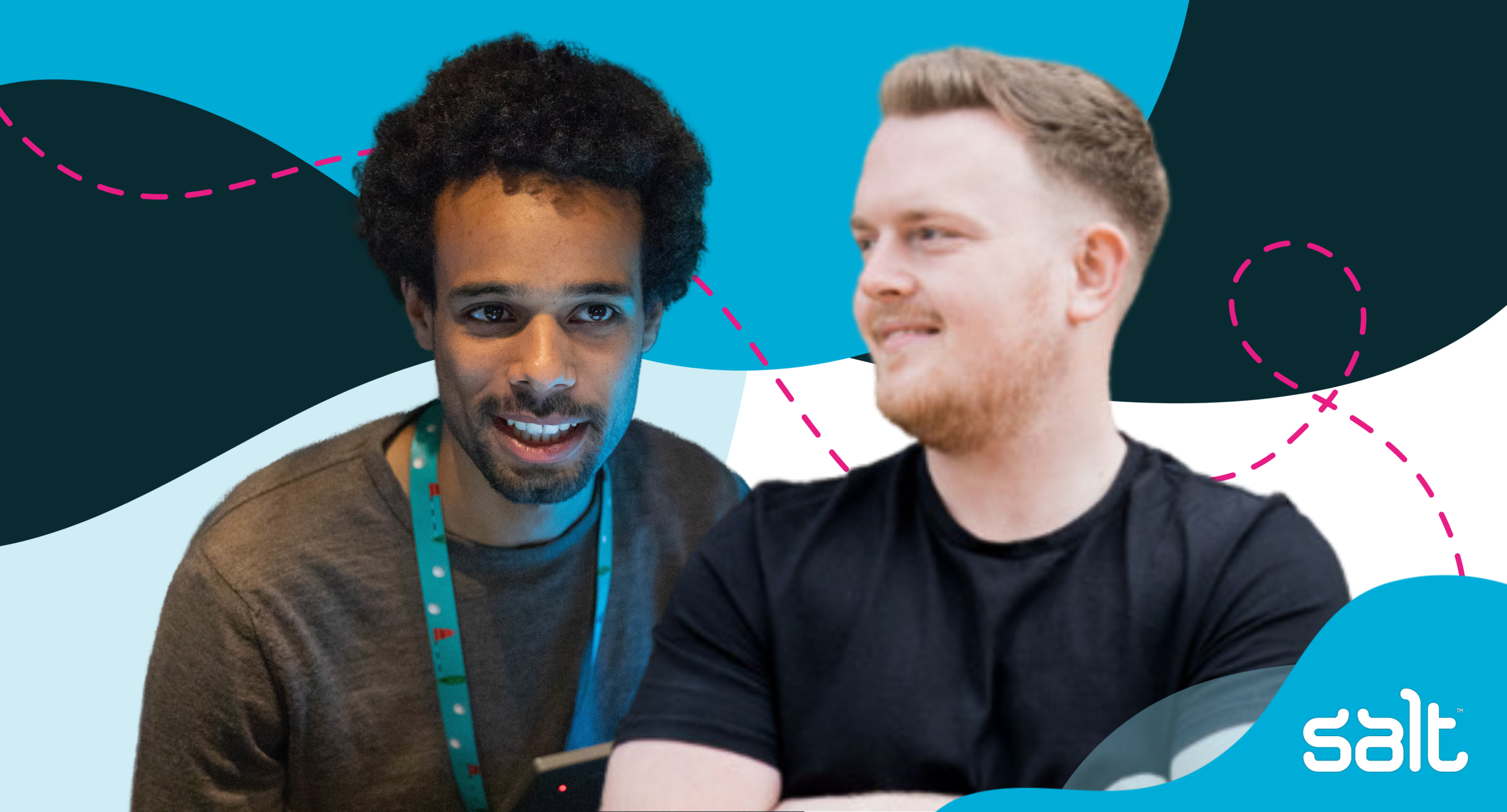
AI tools are quickly revolutionising the UX industry and changing what is possible for UX teams to deliver. William Fallon, UX Design Lead at Preqin, shares his experience incorporating AI tools into his UX processes and all the creative possibilities they bring with them.
In this interview series Associate Director Consultant for Creative, Holley Potts, speaks to customers from all different sectors within the world of digital to explore what UX looks like in different companies, and what trends to watch out for in this fast-changing space!
A word from Holley Potts
I am so excited to share my learnings from my interview with William Fallon, UX Design Lead at Prequin, who is implementing AI tools within UX processes in really exciting ways! Already his team are using these tools to make data-based decisions, share insights and improve user experience more effectively. Though many are worried about AI replacing jobs, William shows how AI can actually supercharge UX roles, providing powerful support to critical UX processes! A big thank you to William for sharing his insights about AI in the UX industry with Salt!
Preqin are an exciting global platform empowering the finance community to make better decisions with data and insights, increasing transparency and access across the global alternatives market.
Follow William on LinkedIn to keep up with his work and insights.
What are the emerging trends in data analytics within the UX industry?
A key one relates to an issue we have in our Design team: we don’t have dedicated researchers.
The team tried to take on the researcher’s role ourselves but quickly realised how much work it requires, and the large time overhead it incurs. Initially, we focused on the optimising data analytics processes which produced great results but was still very time heavy.
What took us to the next level was embedding AI tools inside research software, which is already positively impacting productivity.
For us, using these features to process and interpret the content we’re getting from data analytics is producing significant time savings and improving the quality of our insights.
How has the availability of data impacted the way UX professionals approach their work?
Most designers want to be focused on creative problem solving. Confronted with data analytics and they can quickly feel outside their comfort zone. Previously, this work would be delegated to specialist teams.
As creative software evolves to work with data, it becomes less of a barrier. Instead, it opens new creative options, especially when a designer can fully understand the content rather than being presented with a set of pre-digested models.
The data underpinning our personas is a perfect example of this.
The most recent ones I developed used a simplified dataset, and the next iteration of personas will be based on multiple datapoints.
This approach allows us to identify specific personas unique to particular business units and their importance in proportion to our customer base, rather than having a standard generic set and omitting irrelevant ones.
How can data analytics improve your users’ experience?
What we do with data analytics probably doesn’t differ significantly from what other inhouse design teams do.
However, due to the type of business we’re in, we do have the advantage of internal data analytics teams who are great at supplementing the data we get from our web analytic tools. This makes a real difference to the insights we get into our user’s workflows, helping us to accurately identify pain points and making our customer conversations more focused and productive.
How can AI be used to build UX personas?
We’ve been experimenting with AI to analyse customer interviews to identify themes and common behaviours.
Like anything new, the results can vary significantly, but AI tools are quickly evolving from just a novelty tool and we’re now finding they deliver valuable insights.
I’d recommend spending time to fine tune your prompts as this significantly impacts the quality of the results.
There is the misconception that if you if ask a well-structured question you will get the same response from every AI tool.
It’s important to realise that each AI has a different ‘personality’ requiring subtly different types of prompts as this makes a huge impact. You can suddenly move from just saving time to also creating amazing assets or gaining valuable insights.
What would you say to those concerned about AI replacing UX and UI roles?
I can understand the concerns people have, but my experience with AI tools has been positive.
It’s enabled members of team, me included, to take on more projects and deliver easily understandable results in a time frame that just wouldn’t have been possible previously.
The results aren’t always perfect, so people still need to review them. However, even factoring this in, there is a huge benefit for any team to adopt AI tools. We are still in the early days so you’re going to see continued improvement.
How do you see the role of AI and persona development evolving in the near future?
Use of AI is already beginning to positively impact on the whole team by supporting with our research and persona development. For me personally, AI has drastically decreased the amount of time needed to either generate or update personas.
As AI becomes more integrated into the process, having personas dynamically updated with real-time data should become a possibility, rather than our current scenario of semi-annual updates with static datasets.
For businesses in general, the ability to recognise new customer trends and update personas as industries change is going to be invaluable.
If you take the example of how new legislation can impact an industry, being able to identify new business practices and professionals as they evolve, and adapt your products to their needs, can open up whole new revenue streams.
What are the main challenges or limitations associated with using AI for persona development?
The biggest one, particularly for the industry I work in, is ensuring the company’s data continues to be private.
The paranoia about accidentally adding our data to an AI’s dataset is significant.
Our worst case is the scenario where suddenly our company data, not just personas, is publicly available, disrupting our customer business models and giving competitors insight into our strategy.
How Salesforce is tackling this issue is interesting. They’re developing techniques to anonymize your data, providing a safe environment to experiment with and implement AI tools. It puts Salesforce customers in a position to be able to generate real time insights with actions being applied to specific customer set which just isn’t possible with traditional persona generation.
Hiring? Salt connects you to outstanding top talent worldwide
If you’re interested in hearing about how Salt’s top talent recruitment experts around the world can help with your hiring right now, get in touch. Click below to contact the closest Salt team to you!
- Australia
- Canada
- Belgium
- Europe
- Hong Kong
- Malaysia
- Middle East and North Africa
- Netherlands
- New Zealand
- Singapore
- South Africa
- United Kingdom
- United States
Keep up with Salt’s top talent job market insights and hiring advice! You can keep in the loop by following us on. LinkedIn, YouTube, Facebook, Instagram, and Spotify.


